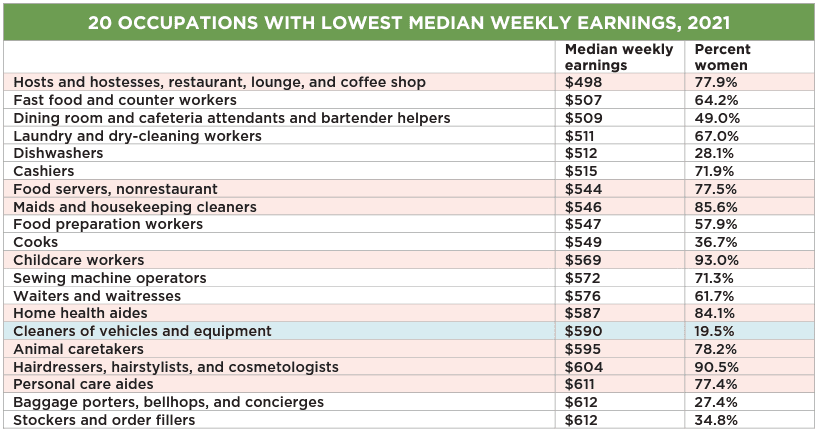According to statistics, women are experiencing higher wage growth than men in the wake of the pandemic.
Female pay climbed 4.4% from February 2021 to February 2022, while men’s income increased 4.1%, according to Atlanta Fed’s Wage Growth Tracker.
Women are taking roles in sectors of the economy where wages are rising, like healthcare, education, financial services, and leisure & hospitality.

Image by the Federal Reserve Bank of Atlanta
This latest shift is part of a broader trend unfolding over the past six months: December 2021 saw the most significant increase in female pay compared to males’ in over two decades at 0.5 percentage points.
Taking into account that female employment overall declined when COVID-19 hit, this development is no small feat.
Then vs. Now
According to the U.S. Department of Labor (DOL), women in the workforce were severely affected when the pandemic hit two years ago. One reason is that the sectors in which many women are employed, such as retail, hospitality, and education, were crippled by lockdowns and social distancing restrictions.
Between leaving the workforce altogether or temporarily caring for their children, female workers bore the brunt of the pandemic-fueled fallout.
However, now women are returning to the workforce, attracted by the higher pay, a loosening of pandemic-era rules, and a resumption of more everyday activities. The percentage of women between the ages of 25-54 working or looking for employment rose from less than 75% in 2021 to nearly 76% last month.
Women who have taken on new roles are also seeing bigger paychecks.
Roughly 31% of women who switched jobs during the COVID pandemic received over 30% more than what they were earning before. According to Conference Board data, about 28% of men who did the same experienced a similar pay raise.
While the uptick in female pay is notable, it is essential to note that women are coming from a lower base regarding compensation. Last year’s weekly take-home pay for women in full-time roles was less than 85% of what men earned.
According to Pew Research, the rate hovered at nearly the same level in 2020. The gap seems to be closing at a snail’s pace, as it hovered at just below 77% at the start of the century.

Image by Pew Research
Statistics suggest women also tend to approach the job market differently than their male counterparts and target jobs where the remuneration and benefits are inherently lower.
According to the DOL, women often make up a greater percentage of jobs with lower median-weekly earnings, such as hosting restaurants, serving food, and childcare work.
Per U.S. Bureau of Labor statistics, women have a greater propensity than men to take on part-time roles. As of February, female employees comprise nearly two-thirds of the part-time workforce. By nature, these jobs tend to pay less.

Image by U.S. Department of Labor
The U.S. unemployment rate currently hovers at 3.8%, with the most job growth happening in sectors like leisure & hospitality and healthcare, where women often make up the majority.






